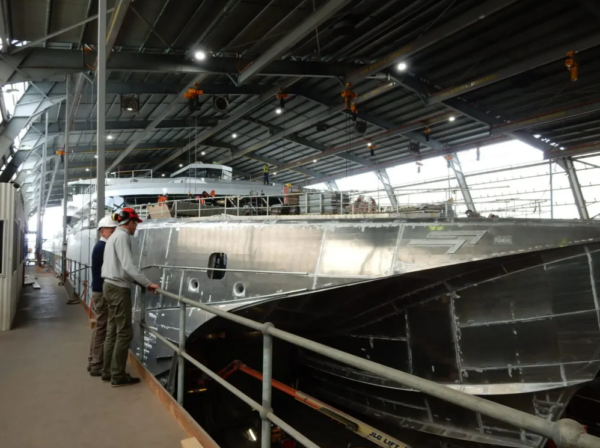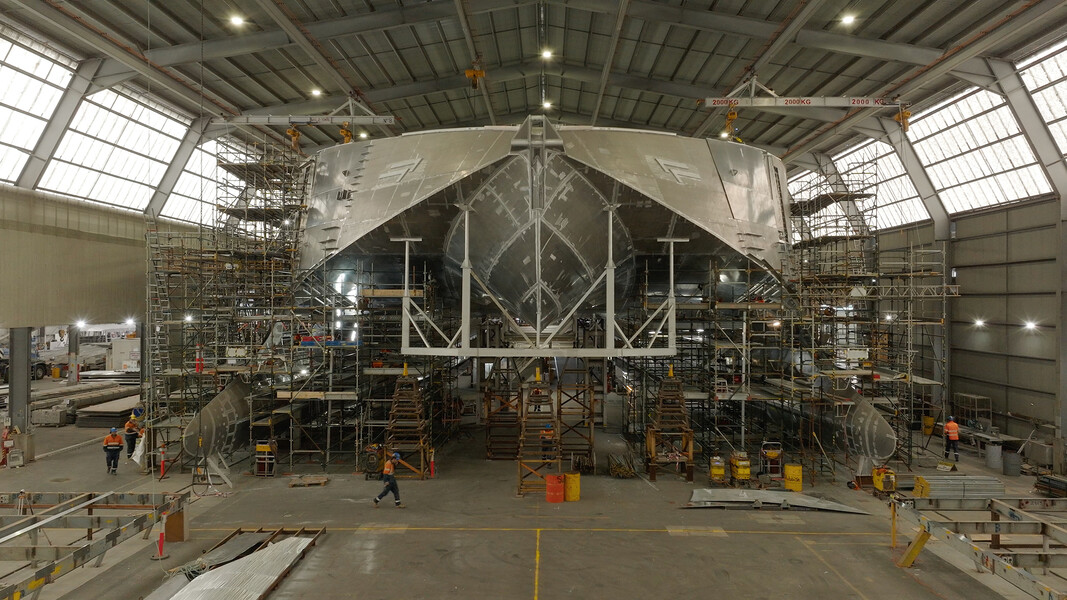Australian shipbuilder Incat has announced a new partnership with France-based Brittany Ferries and Finland-headquartered energy technology company Wartsila to explore the design and technical requirements to build a 137-metre, all-electric passenger and car ferry.
Renowned for pioneering large, high-speed car-carrying ferries, Hobart-headquartered Incat is actively shifting the company towards powering their craft with battery electric propulsion systems and to accommodate more batteries without compromising speed or efficiency.
Incat Chief Executive Officer Stephen Casey said the company’s passion is to build vessels for the future.
“We know there’s a huge fleet across the world that needs to find a net zero carbon emission solution, and we have it here at Incat,” he said.
“We know that battery electric propulsion coupled with lightweight aluminium vessels is the ideal choice to eliminate emissions, and we’ll collectively lead the next evolution of sustainable maritime transport throughout Europe because these are going to meet the zero emissions and reduce the carbon footprint of the maritime sector around the world.”
Brittany Ferries is actively transitioning its fleet from diesel power and will soon add two shore-power-ready gas-electric hybrids to their fleet, supplied by Wärtsilä.
Brittany Ferries Chief Executive Christophe Mathieu said the collaboration with Incat is an important project as the company looks at different ways to reach net zero by 2050 with all-electric power a potential solution, best suited to shorter ferry routes.
“At this stage we don’t know what is feasible, and upon which route, but what we can say is that trusted partners will help us scope it out. Upon completion of the project, we can move quickly,” he said.

Image: Incat
Wartsila Corporation Marine and Executive Vice President Roger Holm said ferries play a vital role in meeting the growing demand for environmentally sustainable transport options.
“The investment Wärtsilä makes in research and development to develop technologies and integrated solutions are key in enabling this development,” he said.
Incat is currently building a 100% electric powered, 130m catamaran ferry with 40 MWh or battery capacity, bound for South America.
Casey said that the vessel is progressing well and remains firmly on schedule following the placement of the superstructures on hull.
“Now that most of the structural work is complete, it allows our fit-out crews to begin their work on the interior of the vessel, this is a really exciting time in the build process,” he said.
“With the superstructures in place, the world’s largest electric ferry is really taking shape and the workforce can see their efforts coming to life.”
This content is protected by copyright and may not be reused. If you want to cooperate with us and would like to reuse some of our content, please contact: editors@pv-magazine.com.








This is really fantastic, good leadership from Tasmania, well done all.